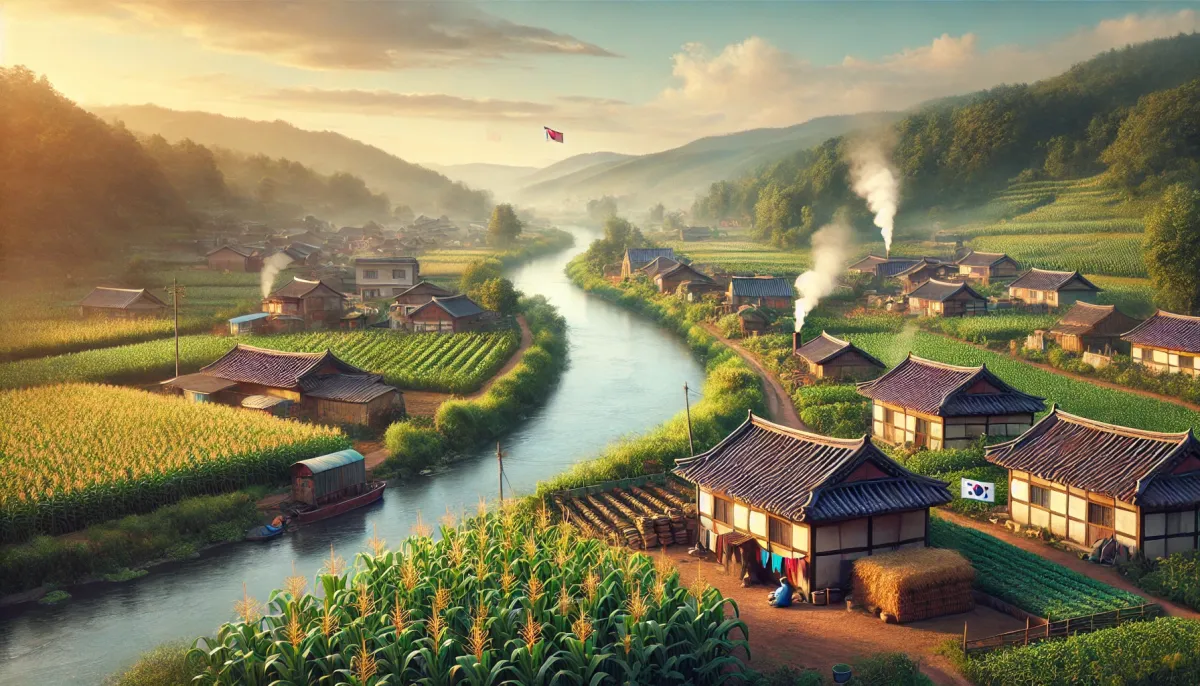Hi everyone, Mark here! As a seasoned backpacker with a passion for exploring Asian cities, I've always been drawn to the unique blend of cultures and history found in these vibrant corners of the world. My recent trip took me to Tumun City, China, a city directly across the Tumen River from North Korea. While the tourist spots were interesting, I yearned for a more authentic experience. I wanted to see the real life of the Korean people living in rural villages along the border.
Discovering Gyeongyeong Village
Using satellite imagery on Google Maps, I traced the Tumen River, the border between China and North Korea, searching for undeveloped Korean villages. That's how I found Gyeongyeong Village, nestled on the banks of the Tumen River, a mere sliver of water away from North Korea's Pungsan County. The internet offered little to no information about this place, fueling my adventurous spirit even further. I hired a car in Tumun City and embarked on a journey to Gyeongyeong Village – a place so obscure, this video marks the very first online record of its existence. This trip is an exploration of a Korean border village, untouched by tourism, where I’d meet the locals and listen to their stories.
Tumun City: A Glimpse into Border Life
Before reaching Gyeongyeong, I spent some time in Tumun City. I spoke with several locals, gaining a better understanding of life in this unique border city:
| Question | Answer |
|---|---|
| Tumun City's population trends? | Population is flowing out, not in. |
| Percentage of Korean population in Tumun's 20,000 residents? | Significantly high. |
| Tourism impact on Tumun City? | Minimal impact; tourists often pass through without spending much money. |
The Enigmatic Gyeongyeong Village
My arrival in Gyeongyeong Village was met with a surprising stillness. The village felt sparsely populated; I hardly saw any residents. Local Koreans explained that border villages often have a high vacancy rate – sometimes as much as 90% of houses are empty. This is largely due to a long-standing tradition of Korean people from this region seeking work abroad, particularly in South Korea. As a result, the village's population mostly consists of older residents.
The houses were uniformly structured, yet each yard told a different story through the varied state of its crops. The village’s remote location made it one of the most isolated rural areas in Northeast China.
Encounters and Conversations
My journey was filled with encounters that added depth to my understanding of life in Gyeongyeong. I chatted with a local man who expressed his surprise at my presence – a person from Guangxi Province visiting such a remote place. He couldn't comprehend my reasons for being there, questioning what could possibly attract me to this non-tourist area.
I also encountered several elderly women. Their limited understanding of Mandarin added a communicative challenge, but with simple phrases and gestures, we managed to connect. One conversation revealed the history of cross-border interactions, including past incidents of theft and robbery by individuals from North Korea. They also mentioned the current practice of regular cross-border patrols by the Chinese authorities.
One elderly couple shared insights into their lives, their children working in South Korea and sending money home. Their income sources included government subsidies for border region residents (3,000 yuan annually per person), pensions, and rental income from their farmland. They also talked about the challenges of healthcare expenses in case of serious illness.
A Village's Resilient Spirit
Despite its remote location and depopulation, Gyeongyeong Village showed signs of resilience. The community operates a public canteen providing free meals to seniors, a testament to the villagers' support system. The village also maintains a cultural center and displays national flags prominently.
The daily life of the villagers was evident in their well-tended vegetable gardens, the drying of chili peppers, and the livestock. The pervasive presence of surveillance cameras, barbed wire, and border patrol signs highlighted the realities of living on such a sensitive border.
Reflections on a Unique Experience
My journey to Gyeongyeong Village was more than just a tourist trip; it was an immersive experience into a community shaped by geography, history, and economic realities. The quiet village held stories of resilience, hardship, and the enduring human spirit. I encourage you to consider visiting this unique place and explore the untold stories of this Korean border village.







